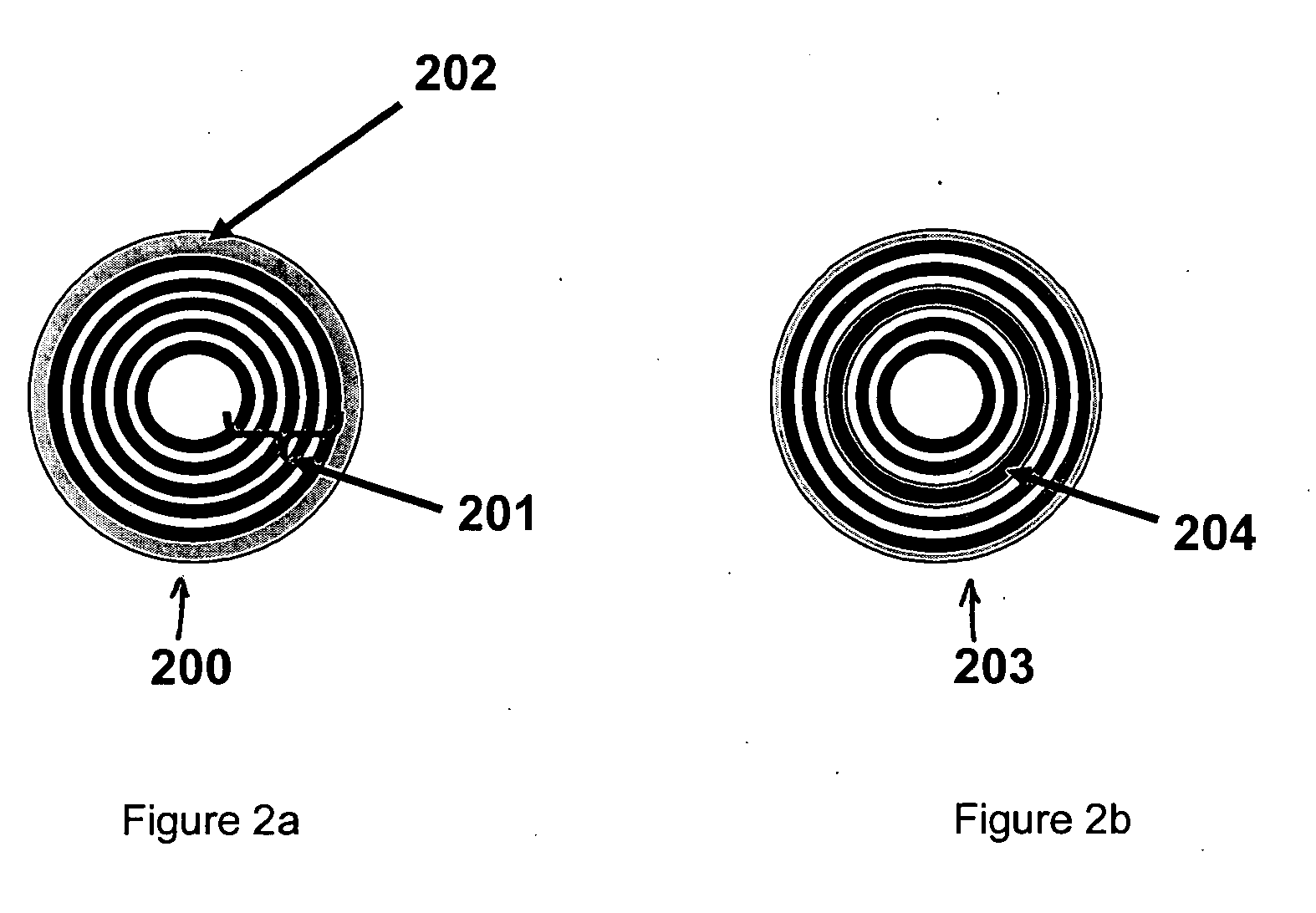Bragg fibers in systems for the generation of high peak power light
a technology of high-peak power light and bragg fibers, which is applied in the direction of electrical equipment, instrumentation, laser details, etc., can solve the problems of thermal damage to the surrounding non-irradiated regions, ultra-short pulses, and otherwise impossible or impractical to implement with other technologies, and achieve high dispersion of one type, high dispersion, and high dispersion
- Summary
- Abstract
- Description
- Claims
- Application Information
AI Technical Summary
Benefits of technology
Problems solved by technology
Method used
Image
Examples
Embodiment Construction
[0038] The present invention uses Bragg fibers of very high dispersion to accomplish stretching, amplification, and compression of an optical pulse in a relatively small length of fiber compared to the prior art. While optical fiber amplifier technology has improved dramatically in recent years and chirping with standard silica optical fiber is common, as discussed above practical compression within optical fibers has been an elusive goal. By reducing the amount of fiber required and propagating the signal primarily in a gaseous fiber core, the present invention allows for compact USP laser systems.
[0039] As mentioned earlier, the high peak power of a compressed high-energy pulse increases nonlinear optical effects in standard silica optical fiber, such as self-phase modulation and stimulated Raman scattering, distorting the pulse and generally preventing pulse re-compression. These optical nonlinearities can also cause pulse spectrum breakup, self focusing and catastrophic failure...
PUM
 Login to View More
Login to View More Abstract
Description
Claims
Application Information
 Login to View More
Login to View More - R&D
- Intellectual Property
- Life Sciences
- Materials
- Tech Scout
- Unparalleled Data Quality
- Higher Quality Content
- 60% Fewer Hallucinations
Browse by: Latest US Patents, China's latest patents, Technical Efficacy Thesaurus, Application Domain, Technology Topic, Popular Technical Reports.
© 2025 PatSnap. All rights reserved.Legal|Privacy policy|Modern Slavery Act Transparency Statement|Sitemap|About US| Contact US: help@patsnap.com



